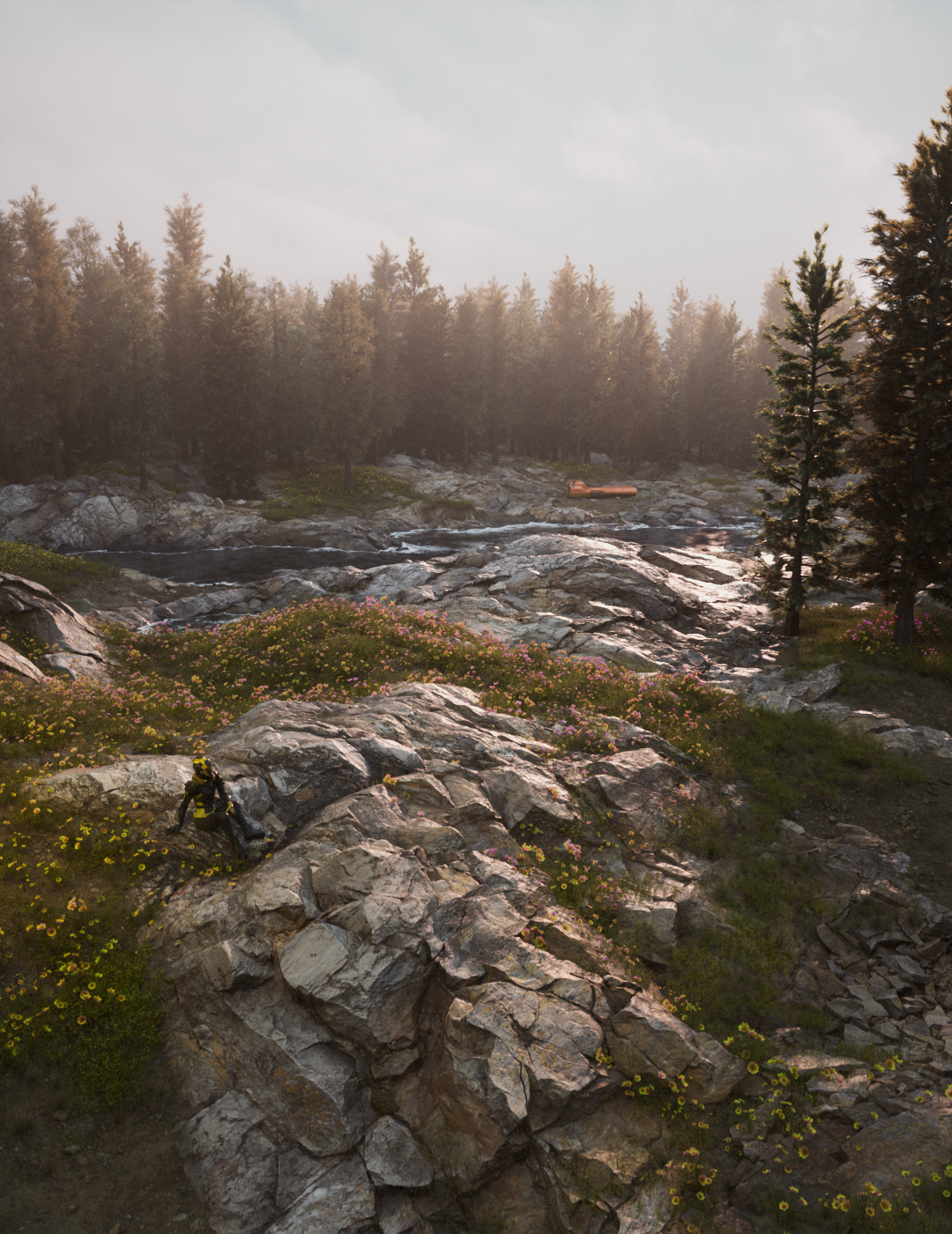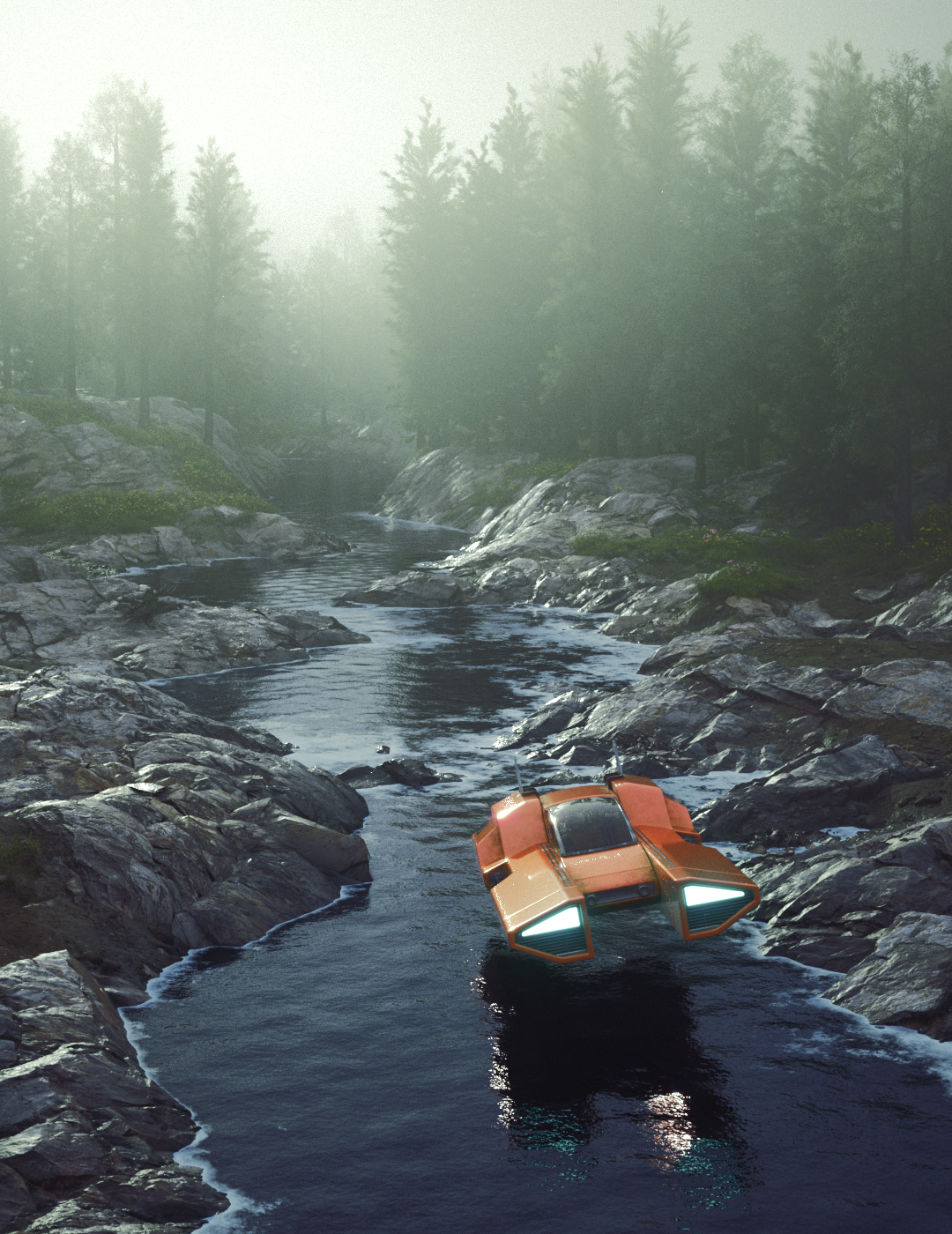Nature studies using C4D / Octane Scatter / Forester
Some of my work exploring the building of natural environments in Cinema4D, and a study in the way changes in light and seasons can shift the look and feel of a single environment quite drastically.
The use of high-quality displacement textures maps was key to achieving the rocky surfaces. Although a lot of manual sculpting of the ground surface mesh was done to create usable base.
The scene is rendered using Octane and harnessing the power of the gpu renderer’s scatter tool to distribute trees, plants and other foliage across the scene. C4D’s field system is used to control and shape the areas where these objects get scattered. The trees and flower themselves are generated with the use of the Forester plug-in, which allows a lot of user-control for controlling various parameters of a plant. This includes, stem / trunk height, radius and bending, multiple controls for branches, stems, grass, leaves, petals, and so on, as well as seed randomizations to create wholly unique versions of the same plant.
The material / textures of the plants right out of the box do not have the most photoreal look, as they are often too saturated and far greener than what is often found in nature. I had been going on hikes with the family fairly regularly at this time and used to opportunity to take a lot of photographs as reference. I learned a lot about the transparency present in a lot of leaves and petals, as well as the varying specularity / reflectivity plants, trees and rocks.
The techniques used to create the foam in the water and the “wet maps” where rock and soil is closest to the water surface was a bit of an epiphany when it came to the use of vertex maps and Octanes dirt node. The vertex maps themselves are driven procedurally using a plain effector and C4D fields, which allows for easy iterations when re-sculpting ground surfaces or changing the height of the water level.
sci-fi vehicle model by Giuseppe Sarci
character model by Fajrul Falakh
—







